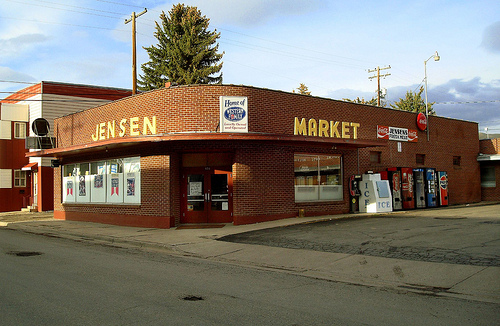 Small-ag mindset vs. Big Ag muscle.“The present paradigm of intensive crop production cannot meet the challenges of the new millennium,” says a new report from the United Nations Food and Agriculture Organization (FAO).
Small-ag mindset vs. Big Ag muscle.“The present paradigm of intensive crop production cannot meet the challenges of the new millennium,” says a new report from the United Nations Food and Agriculture Organization (FAO).
In other words: Big Ag, step aside. It’s not as if the world is being fed particularly well at the moment — and prospects are dimming for chemical agriculture in a resource-restricted, warming world.
The FAO has been very active in attempts to make world agriculture more sustainable. It published an influential 2006 report on animal agriculture’s environmental and climate impact, and it was behind the 2008 International Assessment of Agricultural Science and Technology for Development report, which laid out a vision of the future of agriculture in the developing world based on the principles of agro-ecology rather than on chemically intensive industrial agriculture.
Building on that work, the FAO has now published a “policymaker’s guide” for developing-world agriculture called “Save and Grow” that begins like this:
The Green Revolution in agriculture, which swept much of the developing world during the 1960s, saved an estimated one billion people from famine. Thanks to high-yielding crop varieties, irrigation, agrochemicals and modern management techniques, farmers in developing countries increased food production from 800 million tonnes to more than 2.2 billion tonnes between 1961 and 2000. Intensive crop production helped to reduce the number of undernourished, drive rural development and prevent the destruction of natural ecosystems to make way for extensive farming. Those achievements came at a cost. In many countries, decades of intensive cropping have degraded fertile land and depleted groundwater, provoked pest upsurges, eroded biodiversity, and polluted air, soil and water. As the world population rises to a projected 9.2 billion in 2050, we have no option but to further intensify crop production. But the yield growth rate of major cereals is declining, and farmers face a series of unprecedented, intersecting challenges: increasing competition for land and water, rising fuel and fertilizer prices, and the impact of climate change.
The new agricultural paradigm, according to the FAO, should be “save and grow.” Farmers must preserve the natural resources at their disposal in order to increase their productivity. Reduced tillage to save soil, crop rotations to save nutrients, and improved seeds to save water. Note that for the last decade, “improved seeds” typically meant genetically modified seeds — but as a recent New York Times article on food production indicated, many of the newest, best seeds for our warming world have been developed using traditional breeding techniques.
Of course, Big Ag does not tend to take this sort of thing sitting down. In a case of dueling policy papers, the industry-backed Global Harvest Initiative (GHI) has put out its own set of guidelines for the future of ag. GHI is a coalition of biotech and agribusiness companies — DuPont, John Deere, Archer Daniels Midland, and Monsanto — that has, amazingly, teamed up with three big environmental groups — The Nature Conservancy, the World Wildlife Fund, and Conservation International. GHI intends to fight against the agro-ecological techniques recommended by the FAO; it seems to think the FAO’s approach is anti-technological. As the group puts it darkly in its policy brief:
Societies must carefully examine the application of technology in agriculture to avoid stifling the innovation and investment necessary to develop and promote sustainable agriculture …
Today, it is unfortunate that approval processes are becoming more restrictive and burdensome as court challenges mount based on non-scientific concerns.
This seems to be a reference to several U.S. court cases currently putting the legal brakes on the use of some GMO crops sold by one of GHI’s main funders, Monsanto — though the courts have clearly established that opposition to technological advances can indeed be science-based.
GHI’s main point is that technology is the only answer to feeding the world. Every attempt GHI makes at an evenhanded approach, such as admitting that “the application of new science-based technologies and innovations is but one tool available to help meet the growing demand for food and agriculture worldwide,” is undercut by the group’s conclusion:
Successfully addressing today’s global agricultural challenges, as well as those of the future, requires applying new technologies and innovation at every step of the way, from the beginning to the end of the global agricultural supply chain.
As you dig through the dueling policy prescriptions, you quickly realize that the FAO’s “Save and Grow” provides a real handbook for developing a successful agricultural system based mostly (but not entirely) on knowledge we posses today. GHI, however, wants us to believe that the answers we need are beyond the knowledge of today’s farmers and scientists. One group is presenting a fantasy based on promises and “just around the corner” success; the other is dealing with reality and what can be accomplished with materials and know-how we already have.



